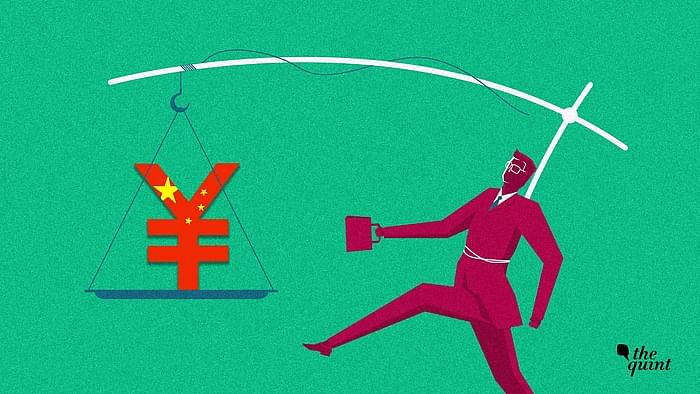MANOJ KEWALRAMANI

Ever since it was launched, there’s been a raging debate about the sustainability of China’s Belt and Road Initiative (BRI). Conventionally, these conversations take shape depending on where you stand. In other words, depending on one’s ideological and geopolitical prism, BRI is either a grand strategic plan that is reshaping the global political and economic order or an example of Xi Jinping’s hubris, which is leading to overreach, and will eventually collapse under the weight of its own contradictions. A new Financial Times report this week, highlighting a sharp decline in Chinese overseas lending, sparked another such debate.
The report draws on data from China’s Overseas Development Finance Database at Boston University. The database tracks lending commitments by China Development Bank (CDB) and the Export-Import (EXIM) Bank of China. These are the two key policy banks that Beijing relies on to finance BRI projects. The researchers estimated China’s overseas development finance between 2008 and 2019 at USD 462 billion, merely USD 5 billion less than the World Bank’s lending during the same period. More importantly, the researchers found that China’s overseas lending tumbled in the aftermath of the 2009 financial crisis only to start picking up steam in 2012.
After a dramatic spike in 2015 and 2016, which is when it hit a peak of USD 75 billion, there has been rapid decline to just USD 4 billion in 2019. The numbers are not without controversy.
For instance, writing in The Diplomat, Tristan Kenderdine and Niva Yau argue that the Boston University database takes a “geospatial approach in examining China’s overseas development financing,” which results in the omission of multimillion dollar loans issued for non-greenfield investments. They further argue that the database does not take into account the fact that Chinese banks have opened branches or subsidiaries in partner states, lending outside of the government-to-government loan scheme. In addition, they point out that Chinese policy bank lending is increasingly focussed on more intra-country loans and more loans to State-owned enterprises. Responding to the debate, the Boston University researchers explained that their database covers all overseas loan commitments to governments and State-owned entities from CDB and EXIM Bank.
It also includes a total of 858 projects, out of which 243 are unmapped but still tabulated. What they don’t include, however, are data from China’s State-owned commercial bank activities.
Lack Of Clear Official Data On China’s Overseas Lending
There are two key takeaways from this discussion.
First, the lack of clear official data on China’s overseas lending makes any assessment challenging. This also underscores the amorphous nature of BRI. But, let’s get back to this later. Second, increasingly, evidence points to a slowdown in China’s financial engagement with the wider world, starting around 2016-2017. This is also seen in other assessments of Chinese lending. In their recent paper, Sebastian Horn, Carmen Reinhart and Christoph Trebesch draw on data from the People’s Bank of China and the IMF to show that Chinese overseas lending largely plateaued after 2016.
An assessment by researchers at the International Institute of Strategic Studies in March 2020 pointed to linkages between domestic financial problems in China and policies to address them motivating the Chinese leadership to be more selective with regard to overseas lending and investment.
China’s outward FDI since 2016 has also evidently tumbled, coinciding with efforts to tighten restrictions on them. The World Investment Report estimated China’s outward FDI in 2016 at USD 183 billion, making China the second-largest source for outward FDI. In 2019, however, the number had fallen to USD 118 billion.
No comments:
Post a Comment